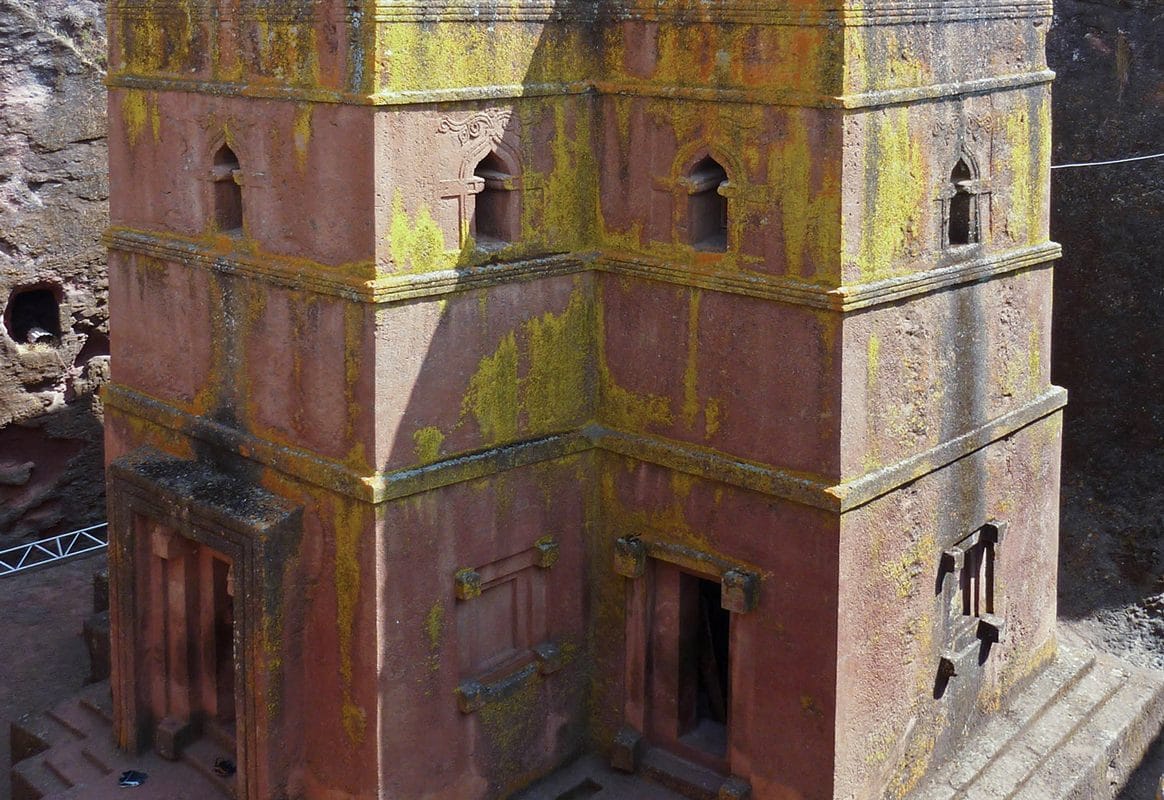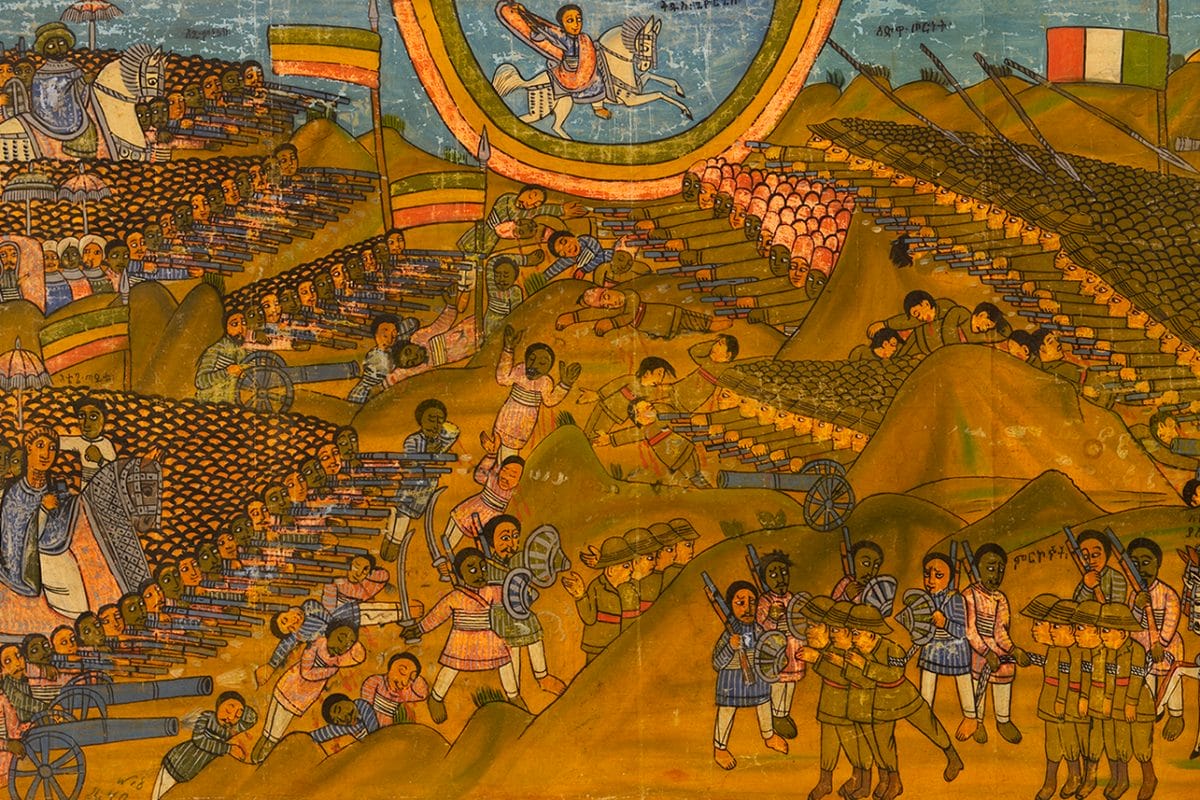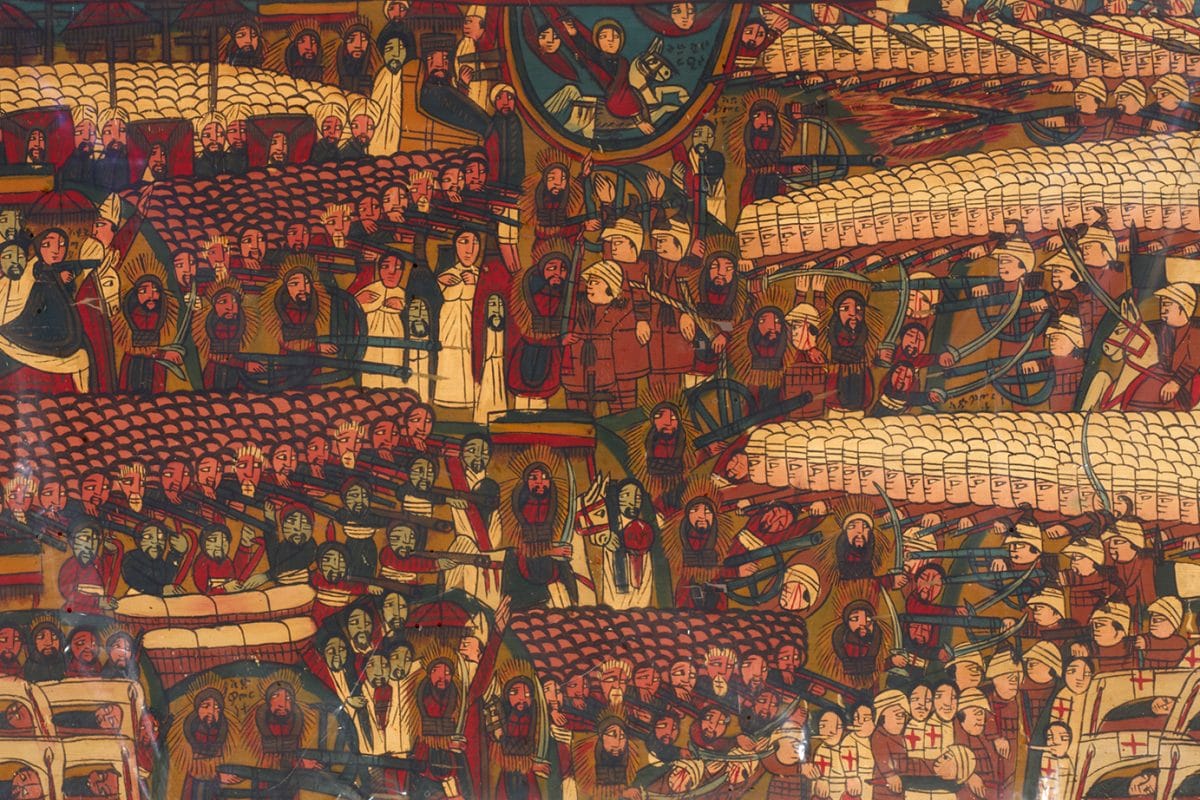Even if you aren’t familiar with George himself you’ll have seen the cross of Saint George everywhere – from flags on government buildings to football strips.
Saint George isn’t just the Patron Saint of England though. George’s patronage extends to amongst others, Aragon and Catalonia, Georgia (unsurprisingly), Moldova, Palestine, and Ethiopia. In our collections from Ethiopia in particular, Saint George features prominently. So just why has the East African nation taken the Saint to their hearts?
Ethiopia, along with its neighbour Eritrea, is something of an exception in the Horn of Africa, in that it is a nation in which the majority of the population practices Christianity. Christianity in Ethiopia takes the form of the Ethiopian Orthodox Church which traces its roots all the way back to the Apostles. Made the official church of the Kingdom of Axum in the 4th century AD, making it one of the earliest nations to adopt Christianity, it has remained the dominant religion in Ethiopia ever since. In fact, the Kings of Ethiopia claimed descent from the biblical figures of King Solomon and the Queen of Sheba.
It is unclear quite how the story of Saint George first came to Ethiopia. Saint George is an important figure in the Middle East particularly in Palestine and Lebanon – it is said he was born in either the Levant or Cappadocia – and may have been introduced to Ethiopia by contact with other Oriental Orthodox churches such as the Coptic Church of Egypt.

One thing that’s very clear though is how important George is in the East African state. In the town of Lalibela, an important pilgrimage site for Ethiopian Christians, eleven churches were hewn from rock between the 7th century AD and the 13th century AD. This monumental task means that the churches are found in subterranean trenches with the earth around them excavated to create the form of magnificent church structures. The best preserved and best-executed church in Lalibela is the Biete Giyorgis, the Church of Saint George. Allegedly, this church was sculpted under the orders of Gebre Mesqel Lalibela – after whom the town is named – in the 13th century AD after Saint George visited him in a vision instructing him to do so.
Addis Ababa’s cathedral is dedicated to Saint George, as is the city’s leading football team. There’s even a beer named after Saint George.
Saint George is a popular figure in Ethiopian iconography often appearing on horseback driving his lance or spear into the dragon he so famously slew. Just as George’s role as a warrior saint made him a popular figure amongst knights and crusaders of Europe, his association with war and battle is prominent when examining our collection of depictions of George in Ethiopian art. The two paintings featured below depict Saint George at the heart of one of Ethiopia’s most important historical moments, the Battle of Adwa.

At the end of the 19th century, Africa had been carved up by the European powers at the Berlin Conference of 1884-85. All of Africa was claimed by European empires with the exception of two states, the Republic of Liberia and the Ethiopian Empire.
Despite this, in 1895, the Kingdom of Italy invaded Ethiopia to further its colonial ambitions in the Horn of Africa. Despite initial Italian success, Ethiopian forces would rout their opponents at the Battle of Adwa in 1896. According to the historian Raymond Jones, Adwa stands out as one of the significant events of the 19th century as, “In an age of relentless European expansion, Ethiopia alone had successfully defended its independence.”

In both paintings, we see the amassed forces of Ethiopia and Italy facing off against each other across a battlefield. The Ethiopian forces are also led by the same three figures in both paintings – Emperor Menelik II, Emperess Taytu, and Saint George. Saint George soars above both scenes surrounded by a halo of red, green, and gold, the colours of the Ethiopian flag, granting divine inspiration to the forces of Ethiopia. In one case he even hurls his spears into the massed ranks of the Italian army.
The Battle of Adwa is commemorated to this day in Ethiopia as a national holiday, with public celebrations held in towns and cities across Ethiopia every year. Each year they celebrate the leadership of Menelik II, Tatyu, and of course Saint George.


